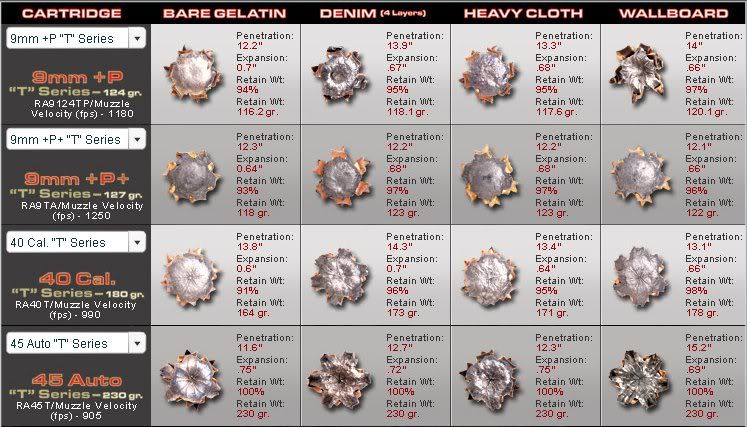I'm of the general opinion that all handgun cartridges are ballistically deficient, but we ignore those shortcomings because the platform is far more portable than the ones typically used for more - uhm - potent cartridges. So I agree with a lot of what has been said in this thread.
But allow me to nitpick for a moment.
Also in the short barrel guns the fast +P's show bullet drop in as little as 15 yards that vary between 1 to 5 inches depending. The "heavy" (and slow) 147 grain slugs drop a lot less.
This doesn't make sense. Bullets are ballistic projectiles. Bullet drop should be dependent only upon time in flight - the amount of time they are affected by the force of gravity. If you lined up ten different guns with ten different loads on a range and fired them at the same time and angle over a long, flat surface, every one of those bullets should drop the same amount from a linear path at the same rate.
If those ten bullets are fired exactly parallel to the ground, then all of the bullets should hit the ground at the same time. They'll just be different distances from their starting point.
So if you fire a fast load from your handgun, it should show a flatter trajectory than a slower load, regardless of its mass. I can maybe see it being an issue if you had a high-mounted scope on the handgun, or something, so that the barrel is pionted at an upward angle relative to the line of sight of the scope. Then inertia might come into play, but even then it's only going to have a noticable effect once one projectile hits the top of its trajectory arc, and 15 yards seems a little close for that. Am I missing something?
Or, you know, someone can just tell me to shut my yap and stay on topic.






